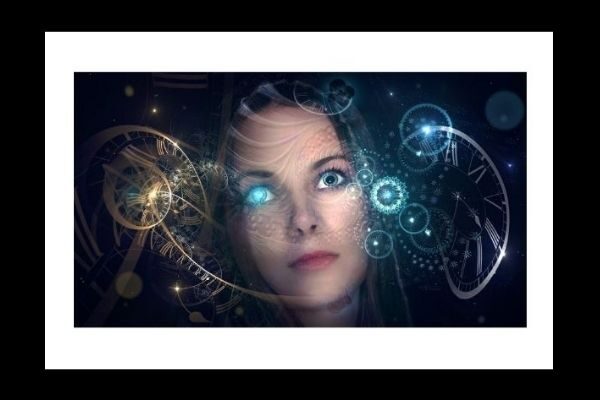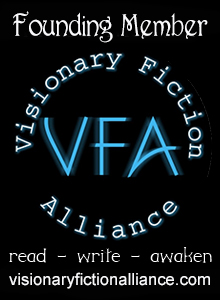
It’s important for fiction writers to be able to categorize their work, if for no other reason than to help agents, publishers, marketers, and retailers match it to what readers want.
One of the first fiction category breakdowns is easy, since it’s determined by word count: Flash fiction, for instance, is usually 1500 words or less; short stories under 7,500; novellas, 7,500-17,500; and novels between 80,000-100,00.
The next fiction category breakdown, deciding if the work is “commercial” or “literary,” is a bit more complicated. Commercial fiction, often called “genre fiction,” has a wide audience, distinct plot, and characters actively pursuing a goal or overcoming a challenge.
Literary fiction, on the other hand, has no standard genre classification. It’s slower paced and puts less emphasis on what happens and more emphasis on the character’s reaction to what happens.
Genre (or commercial fiction) categories include: horror, mystery, thriller, psychological thriller, sci-fi, humor, memoirs, romance, and women’s fiction. Such labels help bundle books together, creating a checklist of expectations to which authors must conform. The rules that govern each genre are often quite specific, such as optimum length, number of subplots, satisfactory endings, and so on.
Often when writers try to produce “commercial” works that violate genre restrictions, they run into serious marketing problems. For example:
When I entered my novel, Between Now and Forever, into the Amazon Breakthrough Awards contest, I labeled it Contemporary Fantasy, in part because I was still uncertain of how to categorize it (since it falls somewhere between commercial and literary and also between genre lines), and in part because no one seemed to recognize my first choice, Visionary Fiction.
There is no delegated space for visionary fiction in major bookstores, for instance, (though Amazon does offer this category). Visionary fiction, such as novels by Paul Coelho, are shelved under New Age, or Metaphysical, which houses mainly nonfiction, making this type of fiction hard to market.
Unfortunately, by categorizing my novel as Contemporary Fantasy, I put the reviewers who decided its fate, in the wrong frame of mind. They were looking for something that wasn’t there.
One reviewer called my story a “sci-fi drama” and called the protagonist’s use of visualization, affirmation, and alert relaxation as “arts and crafts, field trips, and trivial words of encouragement.”
Another reviewer suggested that the characters in my story use their powers in more “productive ways,” which I assume meant in more “magical and dramatic ways.” Granted, I could, for the purpose of increased drama, hype-up the use of their powers (which I may yet do), but that isn’t the sole purpose of my novel. Instead, I hope to show how people with special gifts can rise against the social taboos that are used to make them feel like freaks and failures.
So where does that leave me?
Although my novel is mainly character driven, it is also driven by plot, and by no means would I consider it “intellectual.” So that leaves out Literary Fiction.
Problem is, my work doesn’t fit neatly into any of the categories of Genre Fiction either, including:
-
Contemporary Fantasy: stories set in the real world in contemporary times, in which magic and magical creatures exist, either living in the interstices of our world or leaking over from alternate worlds (Wikipedia).
-
Magical Realism: an aesthetic style or narrative mode in literature in which magical elements are blended into a realistic atmosphere in order to access a deeper understanding of reality. These magical elements are explained like normal occurrences that are presented in a straightforward manner which allows the “real” and the “fantastic” to be accepted in the same stream of thought. It has been widely considered a literary and visual art genre (Wikipedia).
-
Paranormal Fiction: includes elements beyond the range of scientific explanation, blending together themes from the genres of traditional fantasy, science fiction, or horror. Common hallmarks are romantic relationships between humans and vampires, shape shifters, or fantastical beings (the Fae, Elves, etc.). Beyond the more prevalent themes involving vampires, shape shifters, ghosts, or time travel, paranormal romances can also include books featuring characters with psychic abilities, like telekinesis or telepathy (Wikipedia).
-
Women’s fiction: an umbrella term for a wide-ranging collection of literary sub-genres that are marketed to female readers, including many mainstream novels, romantic fiction, “chick lit,” and other sub genres (Wikipedia).
-
Visionary Fiction: (Not really considered genre fiction, but here’s a defintion anyway.) Fiction in which the expansion of the human mind drives the plot. Visionary fiction is not science fiction, yet it can be connected to the new neural sciences—neuro biology, neuro-psychology, neuro-physics. All visionary fiction is driven by new and uncanny experiences (mystical, spiritual and paranormal) in the neural web. The new sciences have shown us over the last three decades how vast and limitless is the increasing power of the human mind. As in so many eras of human life, where our science goes our literature follows. A new genre is developing, one that parallels the new neural sciences and helps to chart the vastly uncharted human mind.”
See my dilemma?
Okay, I can eliminate:
-
Contemporary Fantasy because my protagonist’s experiences are more mystical, spiritual, and paranormal than the magical and do not involve magical creatures.
-
Magical Realism because my novel’s style is not aesthetic or literary enough and, as I noted above, the events are mystical, spiritual, and paranormal rather than magical.
-
Straight Paranormal Fiction because common hallmarks of the paranormal genre are romantic relations between humans and vampires, elves and fairies, which my book is not.
Which leaves me with:
-
Women’s fiction with paranormal elements, because my protagonist’s journey is one “of the mind,” where she discovers latent psychic
powers which give her the freedom to walk her own path, live her own story. -
Visionary Fiction. Because the expansion of my protagonist’s mind drives the plot.
To my relief, I recently discovered another category that blends the line between commercial and literary fiction. It’s called Upmarket Fiction. Upmarket (or mainstream) is the kind of fiction that “infiltrates book clubs and starts conversations” and includes such writers as Jodi Picoult, Sue Monk Kidd, Anita Shreve, and Anna Quindlan.
Now we’re talking.
Upmarket is not a genre, because genre is more defined, yet it’s too commercial to be considered literary. I guess you can say it’s the perfect blend of both worlds.
Problem solved. I will categorize my novel Upmarket Fiction, and if I’m asked to be more specific, I’ll add, Women’s Fiction with Paranormal Elements.
My question to you is: Do you have a favorite genre, or do you prefer to push past boundaries and straddle genre lines?
As always, thanks for stopping by,

